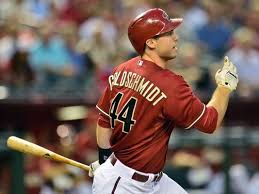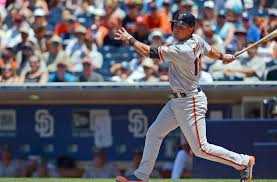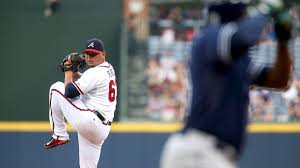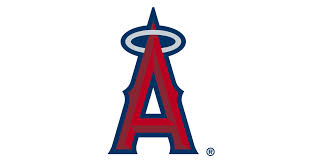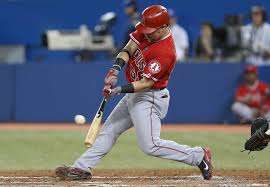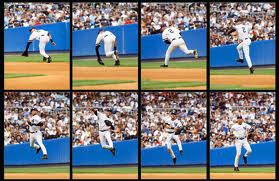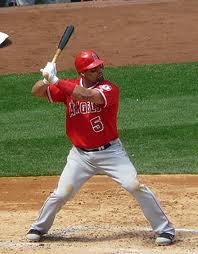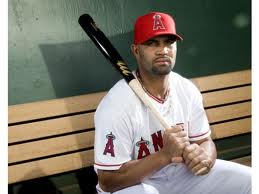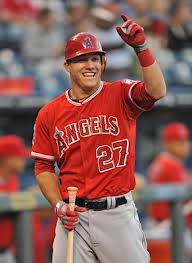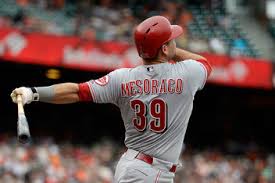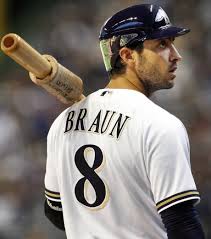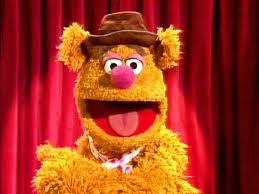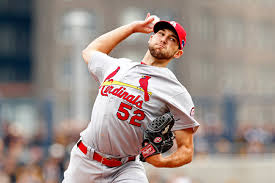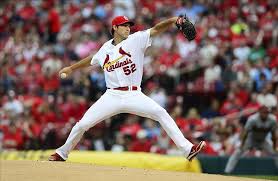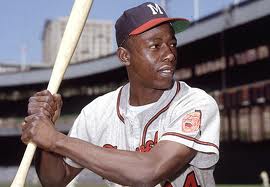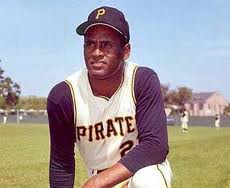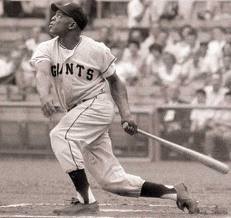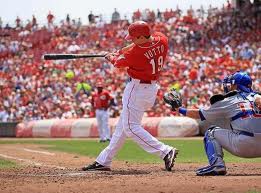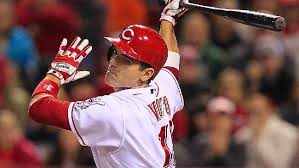Another free agency period is ahead with another Major League Baseball offseason. With so many superstars being signed to lucrative contracts with their existing clubs, players who reach free agency can make exorbitant amounts of money due to fewer players being available and television contracts that teams are using as revenue generating machines. With that being said, is a big-time contract a smart investment for a needy team this winter?
The Yankees as a Model
With Robinson Cano heading towards free agency after the 2013 season, the New York Yankees will be faced with a decision that could alter their original plan of getting under Major League Baseball’s $189 million luxury tax threshold. With $92.4 million due to six players (Alex Rodriguez, C.C. Sabathia, Alfonso Soriano (the Cubs are covering $13 of the $18 million owed to him), Mark Teixiera, Vernon Wells (the Angels are covering $18.6 of the $21 million owed to him), Ichiro Suzuki, and Derek Jeter (who has an $8 million player option), the Yankees, on the surface, appear to have some wiggle room in an offer to their superstar second baseman; however, the players mentioned above are the only players with guaranteed contracts next season.
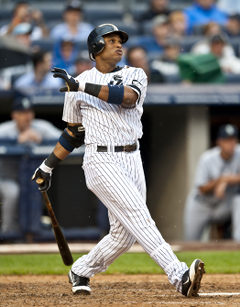 Adam Warren, David Phelps, and Eduardo Nunez are all pre-arbitration, so they can have their contracts renewed at the league minimum, but the club will have to deal with David Huff, Chris Stewart, Francisco Cervelli, Michael Pineda, Ivan Nova, Jayson Nix, Shawn Kelley, Brett Gardner, and David Robertson within arbitration, and determine whether Cano, Hiroki Kuroda, Kevin Youkilis, Andy Pettitte, Phil Hughes, Mark Reynolds, Boone Logan, Travis Hafner, Joba Chamberlain, and/or Lyle Overbay are worthy of being tendered a qualifying offer prior to reaching free agency. With up to 19 spots available for next season, the remaining $96.6 million doesn’t appear to be going very far.
Adam Warren, David Phelps, and Eduardo Nunez are all pre-arbitration, so they can have their contracts renewed at the league minimum, but the club will have to deal with David Huff, Chris Stewart, Francisco Cervelli, Michael Pineda, Ivan Nova, Jayson Nix, Shawn Kelley, Brett Gardner, and David Robertson within arbitration, and determine whether Cano, Hiroki Kuroda, Kevin Youkilis, Andy Pettitte, Phil Hughes, Mark Reynolds, Boone Logan, Travis Hafner, Joba Chamberlain, and/or Lyle Overbay are worthy of being tendered a qualifying offer prior to reaching free agency. With up to 19 spots available for next season, the remaining $96.6 million doesn’t appear to be going very far.
While relief could be on the way with a possible 2014 suspension for Alex Rodriguez, from which his $25 million contract would be forfeited, the long-term contracts that the Yankees have handed out like candy are now causing financial issues as the club’s attendance continues to decline (43,733 in 2012 vs. 40,002 in 2013) along with the talent of the aging players.
Consider this:
Alex Rodriguez is 37 years old and is owed $86 million over the next four years.
C.C. Sabathia is 32 years old and is owed $76 million over the next three seasons (including his 2017 buyout).
Mark Teixiera is 33 years old and is owed $67.5 million over the next three seasons.
The three have been worth a combined WAR (Fangraphs) of 2.6 in 2013 while costing the Yankees $73.5 million in salaries. For comparisons sake, San Diego third baseman Chase Headley, Atlanta third baseman Chris Johnson, San Diego outfielder Chris Denorfia, Baltimore outfielder Nate McLouth, and San Francisco shortstop Brandon Crawford have each posted a 2.6 WAR in 2013…individually. If the Yankees had all five players this season, they would have spent just under $16 million, about $6.5 million less than they spent on Teixiera alone in 2013!
Why These Contracts Don’t Make Sense
By investing large sums of money into veterans when they reach free agency in the post-steroid era, teams are taking immeasurable risks.
1) They are assuming that a high-performing player will be capable of producing into their mid-30’s, and…
2) They are assuming that the high-performing player will stay healthy enough to be worth the investment.
When a player reaches free agency, they have at least six years of major league experience. The player likely had three seasons of pre-arbitration followed by three years of arbitration prior to reaching free agency. Considering that most players make their debuts between the ages of 21 and 24, a free agent is typically between the ages of 27 and 30. The magic prime age in baseball is apparently going to happen in a player’s age-27 season, lasting roughly three to five seasons. A player has reached their physical peak at this point, which allows the player to utilize their various tools to take advantage of the opposition through the use of their experience and mental approaches gained through those experiences. When a multi-year contract is given to a player at the age of 30, say a five-year contract, and that player is then declining for nearly three-fifths of the contract, what is the value to the club? Without performance-enhancers, normal aging processes, such as shoulder fatigue for aging pitchers and chronic knee soreness for a veteran position player, become normal once again. Can teams count on a 39-year-old shortstop to play in 162 games? Ask Derek Jeter how his season went.
Unfortunate Recent Examples
Albert Pujols signed his ten-year, $240 million deal with the Angels following his age-31 season in St. Louis. To make the deal more affordable and to allow the Angels some financial flexibility, Pujols’ contract was heavily back-loaded, meaning he will be making the most money at the end of his contract when he is approaching or passing the age of 40. In fact, in Pujols’ tenth season with the Angels, he is scheduled to make $30 million, the highest annual salary within his contract. After making a combined $28 million in 2012 and 2013, Pujols’ contract will jump to $23 million in 2014 and climb $1 million each season before reaching $30 million in 2021.
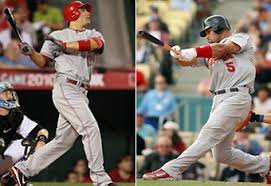 However, Pujols hasn’t really lived up to the contract based on his production over the first 11 seasons in the majors, as he has posted the lowest WAR of his career in consecutive seasons (3.7 in 2012 and 0.7 in 2013). He was shutdown on August 19 due to a partial tear of his left plantar fascia and he should be ready to go next season; however, since he isn’t undergoing surgery, how well will this injury heal? Although the tear supposedly did what the surgery would have, one has to wonder if it can be aggravated, torn further (since it is still a partial tear), and debilitating enough to plague Pujols throughout the remainder of his massive contract.
However, Pujols hasn’t really lived up to the contract based on his production over the first 11 seasons in the majors, as he has posted the lowest WAR of his career in consecutive seasons (3.7 in 2012 and 0.7 in 2013). He was shutdown on August 19 due to a partial tear of his left plantar fascia and he should be ready to go next season; however, since he isn’t undergoing surgery, how well will this injury heal? Although the tear supposedly did what the surgery would have, one has to wonder if it can be aggravated, torn further (since it is still a partial tear), and debilitating enough to plague Pujols throughout the remainder of his massive contract.
And what about the contract that the “small-market” Cincinnati Reds gave to Joey Votto? The Reds handed Votto a ten-year, $225 million extension in April of 2012. The contract hasn’t even started yet, as the first year of the extension will be the 2014 season, Votto’s age-30 season. For ten years, the Reds will hope that Votto will produce numbers similar to his 2010 MVP season, something that he hasn’t seemed capable of reproducing over the last three seasons, despite leading the National League in on-base percentage the last three seasons, four including 2010. When you consider that the Reds are winning in 2013 and they still average just 31,479 in attendance (16th in MLB), how will the team be able to contend when Votto is making $25 million per season beginning in 2018, when he is 34 years old?
Even worse, the contract that the Philadelphia Phillies gave to first baseman Ryan Howard. Howard received his extension in April of 2010 and it didn’t go into effect until the 2012 season, a five-year, $125 million deal that would begin in Howard’s age-32 season. Since the start of the 2012 season, Howard has played in 151 games while posting a .244/.307/.445 line with 31 doubles, 25 home runs, 99 RBI, and a whopping 194 strikeouts in 609 plate appearances. The previous seven seasons, Howard had a .275/.368/.560 line with an average of 26 doubles, 41 home runs, and 123 RBI per season, and that was including his declining 2010 and 2011 seasons, in which Howard posted the lowest OPS of his career (.859 in 2010 and .835 in 2011)…that was, of course, until his dreadful 2012 season (.718 OPS).
The Problem With TV Deals
I was able to get a response from Baseball Prospectus’ Ben Lindbergh when I asked him via Twitter, “Do you think MLB teams are going to shy away from mega contract due to the Pujols/Howard/Hamilton deals in post steroid era?” His response:
The TV money, which was mentioned previously, is an interesting enhancement to the revenue stream for major league teams. With the Los Angeles Dodgers getting over $6 billion over 25 years from Time Warner in their TV deal, which will give the club nearly $240 million per year in revenue, the already crazy expenditures of the boys in blue could become even more egregious this winter. The club seems capable of locking up left-hander Clayton Kershaw to a contract worth $30 million per season or more this winter, AND signing Robinson Cano to take over second base from Mark Ellis, who has a $5.75 million option for 2014 or a $1 million buyout. By taking on those types of contracts on top of the Carl Crawford ($20.25 million in 2014), Matt Kemp ($21 million in 2014), Adrian Gonzalez ($21 million in 2014), Zack Greinke ($26 million in 2014), and Andre Ethier ($15.5 million in 2014) deals, the Dodgers will be willingly entering the luxury tax threshold in an effort to win the World Series.
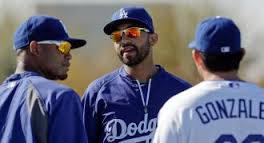 But what happens when money can’t buy titles? The New York Yankees seemed to always have the highest payroll in baseball and they haven’t won the title every season. Spending doesn’t quantify wins, it is, as Lindbergh referenced, the winner’s curse. This concept is outlined in Colin Wyers 2009 Baseball Prospectus piece titled The Real Curse, which Wyers states:
But what happens when money can’t buy titles? The New York Yankees seemed to always have the highest payroll in baseball and they haven’t won the title every season. Spending doesn’t quantify wins, it is, as Lindbergh referenced, the winner’s curse. This concept is outlined in Colin Wyers 2009 Baseball Prospectus piece titled The Real Curse, which Wyers states:
The market for baseball players seems to more closely resemble a sealed-bid auction than it does a market. Since the person who wins that sort of auction is typically the person with the largest bid, it stands to reason that the person who “wins” is in fact the person who overbids…
The curse is then being the winning bid on a contract that was probably more than what another team was willing to bid. By evaluating players and making smart investments, teams that break the curse are able to get production out of what they spend, while teams that suffer from the curse are those that fail to get production out of their investment, as in the suffering that the Cubs went through with Alfonso Soriano, the joint suffering of the Blue Jays and Angels over the Vernon Wells contract, and the Giants’ suffering through the Barry Zito contract.
When spending goes wrong, it can financially cripple a franchise, who is then responsible for allocating funds to an under-performing player while still trying to field a competitive team around that player. Teams seem more likely to take those types of risks, though. Due to the incoming revenue from the TV deals, teams like the Cleveland Indians, who celebrated the sale of the franchise owned SportsTime Ohio to Fox Sports this winter by signing Michael Bourn and Nick Swisher, are more capable of making these potentially fatal bids.
Will the money continue to be there for clubs to take on these large, risky contracts?
Pete Kotz had an amazing story about the leagues finances, and while discussing television deals, he says:
With no one saying no, the networks see sports as a no-lose racket, with ESPN as its piper. The sports channel charges cable companies $5 a month per customer, by far the highest monthly fee in national television. While that may seem a pittance, it’s big money when spread over the 100 million U.S. households with pay TV. And it’s made the other big boys envious.
NBC and CBS have launched their own sports channels. Another from Fox is on the way. Even regional sports channels are starting to broach that $5 mark. Their bet is that viewers will always be willing to pay more. And more. And more.
…Today, the average TV bill rests at $86 per month, about half of which pays for sports programming. That’s more than double a decade ago. So it’s no coincidence that the cable and satellite industries have been jettisoning customers for nine years straight.
“I can’t tell you what will be the trigger,” says Matthew Polka, president of the American Cable Association. “But I am certain that at some point in the very near future, that balloon will burst.”
As cable and satellite customers are forced to pay more and they continue to leave those companies in an effort to save money, the money will eventually not be coming in. The cable and satellite companies will likely battle with the club’s networks to get lower rates, and there could be something drastic, like CBS being taken away from major markets. Eventually, the boom in finances and long-term contracts will go away and the inevitable crash will make it harder for clubs to make large financial commitments to star players. Imagine if the housing market was responsible for financing people’s salaries and when the market for home sales crashed how disastrous that could have been…but it did and it was miserable for the entire economy.
Major League Baseball is exempt from some things due to anti-trust laws, but nothing is too big to fail.
Who Is Worth a Mega-Contract?
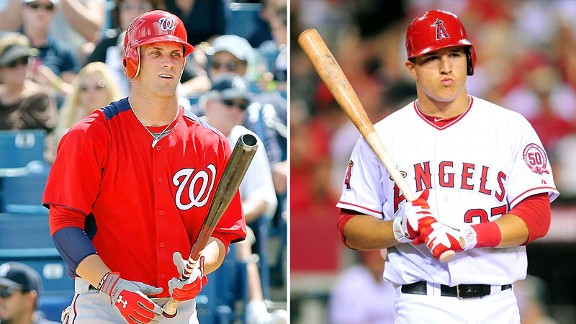 It may seem easy to say that locking up players within their pre-arbitration or arbitration years to lucrative, long-term contracts seems more intelligent than waiting until free agency, as the annual salaries can slowly increase rather than starting and sitting at $25 million per year for eight straight seasons. A few examples of players who could be worth a long-term investment in this scenario:
It may seem easy to say that locking up players within their pre-arbitration or arbitration years to lucrative, long-term contracts seems more intelligent than waiting until free agency, as the annual salaries can slowly increase rather than starting and sitting at $25 million per year for eight straight seasons. A few examples of players who could be worth a long-term investment in this scenario:
- Angels’ outfielder Mike Trout is earning $510,000 in 2013 and he is pre-arbitration in 2014 before being eligible for arbitration in 2015, 2016, and 2017. If Trout continues his torrid pace for the next four seasons and reaches free agency in 2018 at the age of 26, what types of maniacal offers will he be receiving at that point?
- Nationals’ outfielder Bryce Harper signed a major league contract and will be arbitration eligible in 2016, 2017, and 2018 before reaching free agency at the age of 25 in 2019. Like Trout, he has posted absurd numbers, given his age, and, with Scott Boras as his current agent, could own half of a franchise based on what he will be offered in free agency.
- Orioles third baseman Manny Machado, Nationals’ right-hander Stephen Strasburg, Marlins’ right-hander Jose Fernandez, Marlins’ right-fielder Giancarlo Stanton, and Mets’ right-hander Matt Harvey (upon his return in 2015 from elbow surgery…if he is just as productive and dominant) are additional players who fit this mold.
Why are these types of players worth a long-term investment? Because they are young, producing prior to their prime years, and are more likely to continue producing towards the end of a 10 to 15 year extension than a player who turns 40 or 41 in year ten of their long-term contracts, like Joey Votto and Albert Pujols.
These are the types of mega-contracts that seem more reasonable and realistic for franchises, while being less likely to provide a curse on the investing bidder. Because the player is within the grasp of the franchise already, the team has all kinds of data available to analyze, they have coaches and front office personnel who have strong relationships with the player, and the fan-base, media, and community surrounding the player are already familiar, so it could be assumed that there are fewer outside influences that could impact player performance.
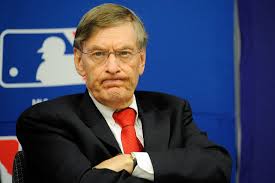 Regardless of the potential that these younger players possess, any long-term contract remains a risk for the franchise. If the clubs suddenly refuse to offer these types of contracts, however, the league and its owners would likely be accused of collusion. The mega-contract isn’t going away anytime soon. Despite future reluctance to meet the demands of players and agents to attain these large salaries, there will likely be enough money, or a few teams with large enough revenue streams, for at least one of these deals to be made each offseason. As fewer and fewer star players seem to reach free agency due to long-term commitments with their existing franchise (like Votto, Troy Tulowitzki, and Carlos Gonzalez), the stars that do reach free agency will likely continue to get the lucrative deals.
Regardless of the potential that these younger players possess, any long-term contract remains a risk for the franchise. If the clubs suddenly refuse to offer these types of contracts, however, the league and its owners would likely be accused of collusion. The mega-contract isn’t going away anytime soon. Despite future reluctance to meet the demands of players and agents to attain these large salaries, there will likely be enough money, or a few teams with large enough revenue streams, for at least one of these deals to be made each offseason. As fewer and fewer star players seem to reach free agency due to long-term commitments with their existing franchise (like Votto, Troy Tulowitzki, and Carlos Gonzalez), the stars that do reach free agency will likely continue to get the lucrative deals.
